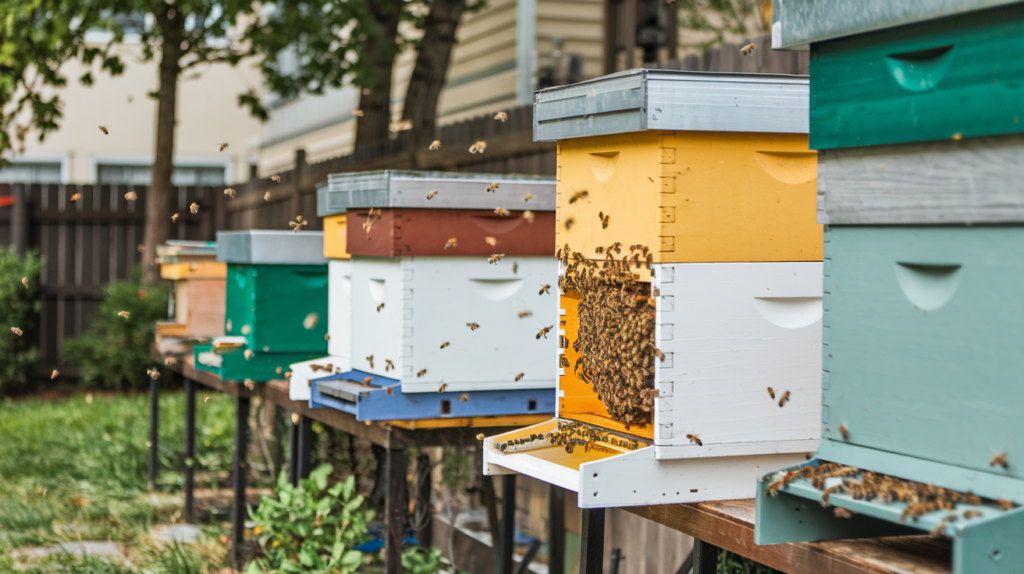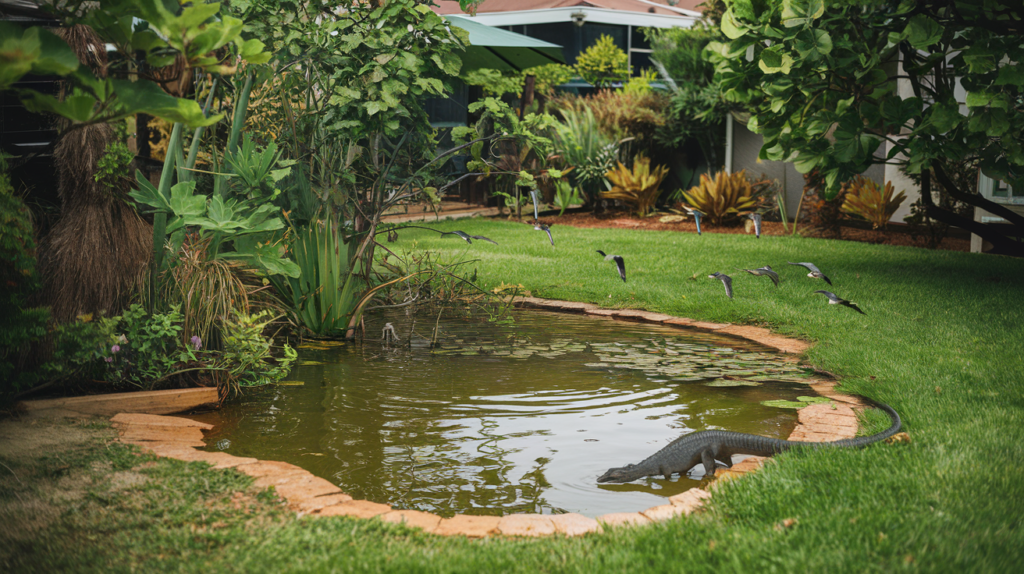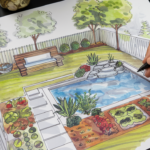MY Tips
Edible Landscaping: A Practical
Guide Using Permaculture Principles
Create thriving outdoor spaces with Wildlife Friendly Landscape Design. Australian property owners increasingly value landscapes that support local ecosystems.
As a landscape professional in Australia, striking the right balance between client goals and ecological stewardship is essential. More property owners are recognising the importance of supporting local ecosystems and are looking to trusted experts for guidance. Integrating wildlife-friendly elements into your designs not only meets market demand, but also helps preserve our unique biodiversity and ecosystem health. Here’s how to create landscapes that are both visually appealing and beneficial to native wildlife, along with locally relevant resources to refine your approach.
1. Start with a Regional Perspective
Wildlife-friendly landscaping begins with understanding local ecosystems. Identify native plant species that thrive in your region’s soil and climate conditions. These species often require less maintenance, reduce the need for chemical inputs, and provide critical habitat for pollinators, birds, and other fauna.
Resource:
- Australian Native Plants Society (ANPSA) – Information on Australian native plants, including cultivation notes and distribution data.
2. Prioritise Plant Diversity
Incorporating a diverse palette of shrubs, grasses, perennials, and trees ensures that your design supports a variety of wildlife species. Mixed plantings create layered habitats—ground covers for insects, nectar-rich shrubs for pollinators, and seed-producing plants for birds.
Resource:
- BirdLife Australia – Guidance on selecting plant species and habitat features that attract and support native birds.

3. Provide Continuous Bloom and Forage
Clients appreciate year-round interest and colour in their gardens, and so does wildlife. Design planting schemes that ensure something is always flowering or producing seeds and berries, extending resources for insects and birds beyond the typical growing season. Consider selecting native wildflowers, grasses, and shrubs that deliver consistent habitat value.
Resources:
- Aussie Bee – Information on Australian native bees and how to support them through plant selection.
- Australian Pollinator Week – Guides and resources on attracting and sustaining native pollinators year-round.
4. Incorporate Water Sources
Water features serve as vital resources for wildlife, offering drinking and bathing opportunities. A shallow birdbath, a recirculating water fountain, or a small pond with gently sloping edges can attract a diverse range of native species. Ensure these features are easy to maintain and positioned for both wildlife access and client enjoyment.
Resource:
- Landcare Australia – Community-driven environmental management initiatives, including guidance on creating wildlife-friendly features.

5. Create Safe Havens with Shelter and Nesting Sites
Wildlife requires cover for nesting, resting, and protection from predators. Incorporate shrubs with dense branches, clumps of native grasses, and small log piles (where appropriate) to offer refuge. Nest boxes designed for local bird or bat species can also enhance habitat value.
Resource:
- Backyard Buddies – Practical tips on providing shelter, nesting sites, and other habitat features for a variety of Australian wildlife.
6. Avoid Chemical Pesticides and Herbicides
Minimising chemical use is key to wildlife-friendly design. Implement Integrated Pest Management (IPM) strategies and select pest-resistant native plants to reduce pesticide reliance. Encourage beneficial insects like lady beetles and lacewings for natural pest control, and educate clients on eco-friendly management practices.
Resource:
- Agriculture Victoria – Information and guidelines on sustainable pest management practices suitable for Australian conditions.
7. Enhance Soil Health for a Thriving Ecosystem
Healthy soil fosters resilient plant communities that support diverse wildlife. Incorporate organic matter, use mulch to retain moisture, and minimise compaction. Healthy soils support beneficial organisms—microbes, worms, and insects—that form the foundation of the food web.
Resource:
- Soil Science Australia – Professional insights and resources on maintaining and improving Australian soil health.
8. Consider Connectivity and Larger Ecosystem Context
Wildlife-friendly landscaping isn’t limited to a single property. Where possible, design with connectivity in mind by aligning plantings and habitat structures to link with adjacent green spaces or wildlife corridors. By thinking beyond property boundaries, you contribute to more sustainable habitats that support migrating birds, insects, and other native species.
Resource:
- Bush Heritage Australia – Information on landscape-scale conservation efforts, wildlife corridors, and strategies for improving habitat connectivity.
9. Communicate the Ecological Value to Clients
Many homeowners may not be fully aware of the ecological benefits of wildlife-friendly designs. Highlight the native birds, insects, and mammals they can expect to see, the potential maintenance savings from hardy native species, and the environmental benefits of reduced chemical use.
Educating clients helps them appreciate your expertise and commitment to environmental stewardship.
Elevating Your Professional Practice
Wildlife-friendly landscapes are more than a trend—they’re a crucial part of sustainable, resilient design in Australia’s unique environments. By selecting native plants, diversifying habitats, minimising chemical inputs, and planning for ecological connectivity, you can create functional, beautiful spaces that appeal to clients while supporting local ecosystems. Incorporating these best practices and resources will enhance your professional reputation, positioning you as both a skilled designer and a steward of our natural heritage.
Ready to start your journey?
Book a 10-minute connect session to discuss your goals and how we can support you. Together, we’ll pave the way for your future in landscape design.
Your journey begins here—let’s create something extraordinary!
Our recommendations and information provided in our articles, blog and on this website is intended to be educational and informative only. It is at no time to be relied upon as personal advice for your own situation. While we try our best to ensure that the information is accurate, sometimes it may not be suitable or correct for your particular circumstances or the products or services you may choose to purchase.
Any comments, guidance, or information on this website is our own view and based on our experience and we do not provide any guarantees, warranties relating to any aspect of the information, including but not limited to any reliance on the safety or security of any landscape recommendations, renovations, designs, plant use or any particular installations. We hope you find it helpful but please be aware that it may not be suitable for your situation, location, surroundings or other specific needs. This information is offered in good faith and it is not specific to any one person or any personal circumstance. You should contact us directly so we may review and assess your own situation to be able to provide recommendations specific to your own requirements, particularly if you are in a fire, drought or other sensitive area.
We hope you understand that for this reason, we are not to be held liable for any decisions you make based on any of the information, views, or recommendations on our website and in our blog articles and any consequences, as a result, are your own.
The information shown and posted on this website or expressed by either the moderator is the view of the person(s) posting only and is intended to be examples only and not advice for you personally.
Any decisions or information on this website you decide to use, read or act upon is done at your own risk and you shall indemnify yourlandscapejourney.com, its directors and employees for any and all claims whether resulting directly or indirectly from your actions.





